What is Black Tea?
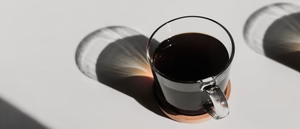
Introduction
Hands down, black tea is the most widely consumed tea on the planet. And for a reason. For starters, black tea is the most oxidized of all tea types. That brings tons of practical benefits for everyone. Not only does this tea harbor the highest levels of caffeine and tannins but it also can last for far longer than any other type. Small wonder black tea in the compressed-bricks form has been used as de-facto currency in Tibet, Mongolia, and Siberia in the 19th century.
Indeed, gone are the days when green tea ruled the world. For centuries, the unoxidized tea has wowed the emperors of the East and caught the fancy of traveling Buddhist monks who didn’t hesitate to banner the drink’s amazing health benefits to all the corners of the globe.
However, ever since it was discovered in the mid-17th century, you can’t beat the shelf life of black tea. Today, you’d be pressed to consume green tea within 6 months from purchase (1 year tops) or you might as well throw the concoction in the dust bin. But black tea tells a different story altogether. You can store it for 2 to 3 years and still get the same strong, malty flavor as the day it was bought. All this must be the reason why Earth is blessed with all sorts of black tea variants — from the original Lapsang souchong to Darjeeling, English Breakfast, Earl Grey, sweet tea, and last but not least, iced tea. Plus, if you want a coffee substitute to energize and revitalize your senses but don’t want coffee’s acidic nature (and all its other side effects), then black tea is your cup of tea.
Truth be told, black tea may play the second fiddle to green tea in the antioxidant department. But there are healthy active ingredients you’ll find flourishing in black tea and largely missing in any other tea type. Top of that list is the polyphenol theaflavin. Studies have shown that this antioxidant can reduce plaque formation in the blood vessels, not to mention reduce blood sugar and cholesterol levels. In short, it can be your heart’s secret weapon. And that’s no small feat. Read on to find out more.
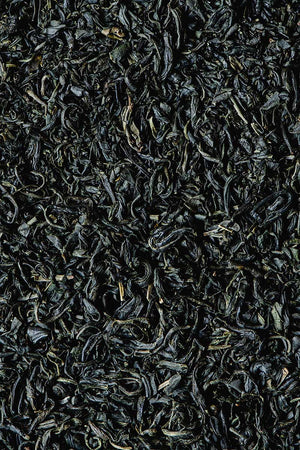
History: The Rise of Black Tea
Right from the onset, know that black tea demand all over the world is more than any tea type. Its use is so widespread, experts predict: ● 4.4 million tonnes: the amount of black tea consumed in the year 2027 ● 3.7 million tonnes: the amount of green tea for that same year. Note: 1 tonne = 1,000 kilogram
Said data was released by no less than the Food and Agriculture Organization of the United Nations. But while black tea is preeminent these days, it had a humble beginning. For centuries, no one really knew such a tea concoction existed.
Simply put, black tea is the more oxidized version of green, white, and Oolong tea types. Its traditional 4-step transformation (withering, rolling, oxidation, firing) has set it apart from the rest of the tea that came from the leaves of the Camellia Sinensis plant.
China, of course, has been credited as the birthplace of black tea. Medical text written by Hua Tuo indicated tea was a celebrated drink in the Asian nation even in the 3rd century AD. But from that moment, there was only one cup of tea that ruled the palates of emperors and monks alike for hundreds of years. And that honor belonged to green tea.
By the 10th century, semi-fermented versions of green tea were produced in China. Pretty soon, Chinese farmers, in the hopes of extending the shelf life of their tea products started experimenting with the oxidation process, pushing the envelope even further. In 1590, the fully-oxidized version of green tea was born. Aptly, the Chinese called it “red tea” for the reddish color of the drink.
With its longer shelf life, black tea became the perfect tea concoction for export. And as you really can’t keep something so good from spreading, tea would soon conquer the oceans. Europe came to know black tea in the 17th century via the first shipments of the Dutch East India Company which delivered Chinese and Japanese tea.
In 1706, England’s first-ever tea shop opened, courtesy of Thomas Twining. Then, it was a heavily taxed product enjoyed only by the upper class. To note, coffee was already well-established before tea arrived but the latter would soon win the hearts of the British making it the most favored drink to date in the kingdom.
Enamored by the drink, the British empire wasted no time in spreading the love of tea in its vast territories. For one, the American colonies would soon embrace tea throughout the 1700s. But taxation would complicate things and heavy taxes on tea in the colonies backfired resulting in the Boston Tea Party in 1773. By 1775, the 13 British colonies in American were up in arms in the War of Independence, which culminated in the Declaration of Independence by the 4th of July, 1776.
But black tea cannot be denied. In the 1800s, the British discovered black tea can be grown in its vast territory in India, particularly the Darjeeling and Assam variety, giving it a fighting chance to compete with China’s hold as the top producer of tea on the planet. What’s more, a bigger-leafed Camellia Sinensis Assamica in India would be the perfect instrument to create black tea.
Indeed, on that second-most populous nation on the planet, black tea found its goldmine. Today, penetration of tea in India per household is at 96% with the majority of Indians preferring a “good cuppa” of black tea than any other tea type.
As for America, it has become a nation of black tea drinkers, though still largely a coffee country. In 2019 alone, the superpower nation consumed over 84 billion servings of tea. A whopping 84% of that is black tea.
Black Tea: A Tea by Any Other Name
It’s true. Black tea is black tea by any other name. But be careful when you travel abroad, what you know as black tea may not mean the same thing in another country, in the Orient especially.
In China, what we call black tea is called “red tea” (hong cha), specifically for the drink’s reddish colors. What’s more confusing is what the Chinese called the “black tea” (hei cha) is a different variant altogether that undergoes post- production fermentation. The Chinese “black tea” is a fermented tea that comes from black-colored oxidized leaves of the tea shrub (ripe pu’erh), hence the name. In addition, this tea is also called “dark tea”, distinct from the West’s black tea.
To add to the confusion, you could be served tea minus the sugar that’s usually added to the drink when you order black tea in a London tea parlor. For the Western World’s sake, here’s a naming convention that’s generally agreed upon:
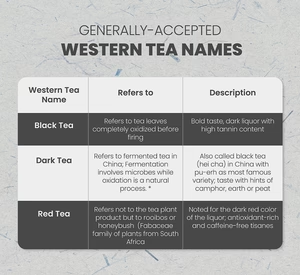
* Fermentation involves bacteria or yeast. These microorganisms eat sugar to produce carbon dioxide. Beer is made via yeast fermentation. Oxidation is just the process of oxygen getting into the tea cells by exposing the leaves to air. Pu-erh is fermented while black tea is oxidized. Fermentation of tea involves molds and the process could take months, if not years.
Over time, lots of black tea variants have emerged on the market. There’s the distinction according to how the products are shipped. For one, it can be loose-leaf black tea or in small pouches dubbed as bagged black tea. Then there’s the flavored black tea and the unflavored ones.
Usually, unblended black teas are named after the region from which they were produced. Some of the most common are:
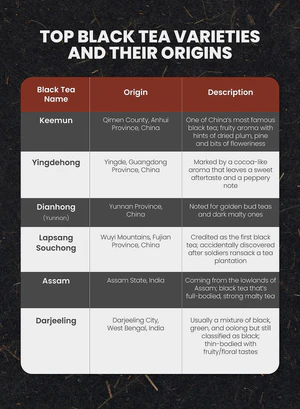

Additionally, there’s the blended black tea. Some of the most common are:
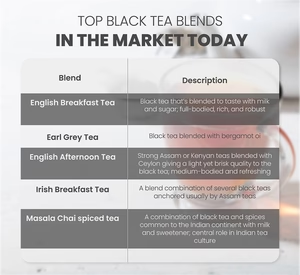
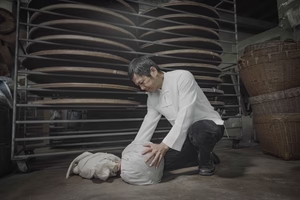
Cultivation and Processing
It must be emphasized that all tea types - be it white tea, green tea, black tea, or Oolong - come from the Camellia Sinensis plant. But though all these tea types come from the same shrub, the end-product differs on the growth conditions of a particular tea plant source and the processing done.
Each tea type, therefore, has its distinct formula that is followed by farmers and improved to perfection. The advantage of processing black tea is that you can use just about any tea leaf and still expect the end-product to turn out well. In this sense, you can call it the less “fussy” of all tea types. Per experience, pundits point out that the bigger-leafed Camellia Sinensis var assamica, more commonly called the Assamica strain, is the superior tea source compared to the smaller-leafed Camellia Sinensis var Sinensis - or the Sinensis variety - when it comes to the production of black tea.
As the Assamica strain is indigenous to India, small wonder the south Asian nation has become the biggest producer of black tea on the planet. As a comparison, Camellia Sinensis var Sinensis from China produces a much mellower and subtler taste compared to India’s Camellia Sinensis var assamica variety.
There’s also a difference in their cultivation. The small-leaved Sinensis variety flourishes in cooler climates (hence the high-mountain teas) while the Assamica strain prefers warmer temperatures, generous rainfalls, and high humidity. Even better, the Assamica variety is a prolific grower and can generate a harvest every 8 to 12 days when grown under ideal conditions and solid fertilization. Put in the mix its bigger leaves which can reach up to 8 inches in length and you have just the right tea shrub to produce stunning black tea.
Thanks to its tremendous yields, the Assamica strain is the favored crop in Sri Lanka, Africa, and Northern India. To note, Sri Lanka’s unique climate allows the harvest of this sturdy bush all year round.
Oxidation, of course, is what separates black tea from green tea. In black tea, tea leaves are allowed to fully oxidize before they undergo heat processing and are dried. Take note that oxidation is a natural process so if you harvest tea leaves and leave them to Father Time, they will oxidize. This happens as the leaf’s cell wall structures break down releasing enzymes in the process.
In other words, leaves are allowed to wither to make black tea. However, such oxidation or withering is prevented in green tea as the leaves are dried immediately after harvest and steamed or pan-fried.
Upon oxidation, the tea leaves turn dark - either rich dark brown or black - as the oxygen interacts with leaves’ cell walls. Additionally, the flavor profile of the tea leaves also changes, adding hints of malt, fruit, and even smoky notes, depending on the processing.
Oxidation also plays a central role in the release of much sought-after catechins - theaflavins and thearubigins - active ingredients harbored by black tea but not by any other tea.
As for processing
there are mainly two ways to process black tea - the orthodox method and the non-orthodox. Below are their differences:
● Orthodox Method
It must be noted that for centuries green tea was processed by hand by the Chinese, with no machinery whatsoever. But the British wanted to improve on each step and introduced machinery when they cultivated for mass production tea in Sri Lanka and India.
The orthodox method, therefore, is the traditional method. Tea leaves are harvested from the farm and withered, reducing moisture in the process. After which, these leaves are rolled or crushed to rupture the cell walls even further and hasten
oxidation. Then, they are allowed to oxidize for hours depending on the final product specifications desired. Heat is then used to stop the oxidation process. They are sorted and graded.
● Non-orthodox Method
We can say the non-orthodox method is the industrial modern method. Its aim, of course, is to hasten the process. Another name
for this method is Crush-Tear-Curl (CTC), a process invented in the 1930s to mechanize black tea processing.
So instead of the usual hand method, withered tea leaves are
introduced to a machine that crushes, tears and curls them into
tiny balls. This way the oxidation process is faster, producing a
consistent taste of bold, strong black tea. All this allows for easy packaging as the cut pieces fit commercial tea bags seamlessly.
What used to take a day of processing using the orthodox method only takes hours with CTC.
What’s the best tea? CTC or orthodox processed? Well, that really depends on your taste. If you typically add flavors, milk or sweeteners, the convenience of a CTC-processed black tea bag is spot on. It’s more bang for your buck as it’s cheaper. But if you want to go for a more complex flavor and want to experience the full taste of black tea without any additives, then you can’t go wrong with an orthodox-processed loose leaf black tea. You just have to pay more.

Theaflavin and Other Black Tea Health Benefits
To a large degree, the oxidation of black tea is a miraculous process. First up, it brings longevity to the shelf life of tea in general. And while green tea can only last for months, black tea can last for several years, a useful trait for a commodity to meet its global demand.
Secondly, black tea’s oxidation brings out certain useful tannins of tea to the fore. And though green tea harbors more antioxidants and polyphenolic catechins (chief of which is EGCG) than black tea, the oxidation of black tea draws to the fore theaflavin, a tannin that has enormous health benefits. Thus even when oxidation contributes to the bitterness and astringency of black tea (and the dark color of the liquor), we can conclude that it’s one essential process.
In short, black tea brings a lot of goodies to the health department. Some of the most noteworthy are:
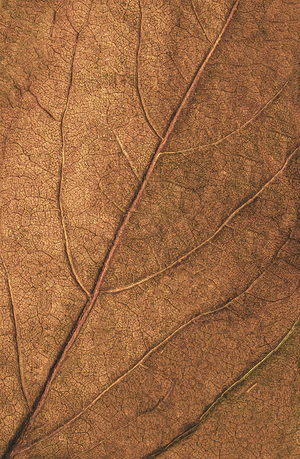
A Wealth of antioxidants
As mentioned, there’s plenty of polyphenols (antioxidant micronutrients we get from plants) in black tea. That means you get access to plant nutrients that can counter free radical damage in the body. These antioxidants include catechins,
theaflavins, and thearubigins.
Take note that theaflavin as an antioxidant has antiviral, and even anti-cancer effects. This has been proven via in-vitro studies in lab animals. One study done on rats shows theaflavins lower cholesterol levels. Plus, the polyphenol helped normalize erratic
blood sugar levels.

Boosts Heart Health
Even better, the antioxidant activity of theaflavins has shown great promise in negating free radical activity in the arteries of the heart. In doing so, it counters the development of plaque, a complication known to cause a heart attack.
In addition, black tea is home to another essential group of antioxidants, flavonoids which can also benefit the heart. To note, flavonoids are a diverse group of phytonutrients that are beneficial to human consumption. Regular intake of flavonoids reduces a host of risky factors that lead to heart disease including:
- High cholesterol
- High blood pressure
- Elevated triglyceride levels
- Obesity
For instance, one randomized controlled study revealed that drinking black tea for as long as 12 weeks led to a 36% reduction in triglyceride levels. Plus, it lowered LDL/HDL ratio by as much as 17%.
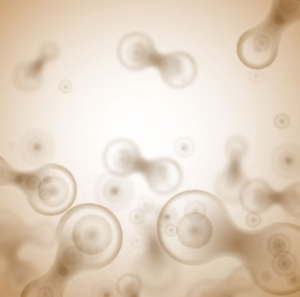
REDUCE CANCER RISK
Cancer is a leading cause of death worldwide. Every year,over 19 million peopledie of cancer-related deaths while millions more suffer. In America alone, it’s estimated 1,806,590 patients will be diagnosed with cancer while over 606,000 will eventually succumb to cancer that year.
The good news is polyphenols found in black tea can help protect human cells against cancer damage. One particulartest-tube studyrevealed that black tea can play a central role in regulating the growth of cancer cells by reducing the replication process of new cells.
Even better, another key study pointed out the amazing effects of black tea in curtailing breast cancer. Said study revealed how black tea can halt the spread of breast tumors (hormone- dependent). Thus, though black tea may not be able to cure cancer, it can help decrease the proliferation of cancer cells.

IMPROVE GUT HEALTH
If you’re serious about health, you really can’t afford to take your gut for granted. That’s because it’s the center of your immune system (80%) containing trillions of bacteria. While many of these bacteria are beneficial to one’s health, some can undermine your personal well-being.
So much, studies have shown the quality of bacteria in your gut determines your health and your ability to fight certain diseases which include:
- Cancer
- Obesity
- Type-2 diabetes
- Cardiovascular disease
- Inflammatory bowel complication
But this is where the polyphenols in black tea come in handy. By inhibiting abnormal growth of bad bacteria (e.g, Salmonella), black tea promotes gut health. What’s more, the drink has antimicrobial properties killing off toxic substances and strengthening the lining of your digestive tract.
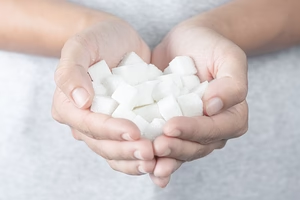
REDUCE BLOOD SUGAR
Blood sugar level complications are deadly. It can lead to kidney failure, cardio disease, type-2 diabetes just to name a few. One of the major factors contributing to blood sugar in your body is sweetened beverages. Excess sugar, of course, leads to fat storage and a host of health complications.
And once again, black tea comes to the rescue. Studies have shown that the non-sweetened beverage can greatly enhance the body’s use of insulin.
One study had tremendous results. It revealed that black tea can increase insulin absorption by as much as 15-fold. Another study showed that mice that were induced with black tea reduced their blood sugar levels.
And that’s just for starters. It’s no accident black tea has captivated more drinkers on the planet than any other tea today.Click herefor more benefits of the favored drink.

What Does Black Tea Taste Like?
Well, the taste of black tea depends on the variety of tea you’re dealing with. In general, however, black tea is distinctively malty in flavor, reminding you of light beer minus the alcohol content. That it’s more oxidized than most teas means these leaves produce dark liquor when infused.
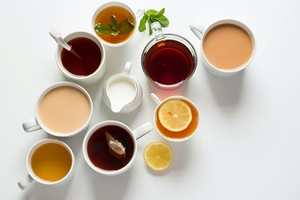
As it’s not as fresh as green tea, black tea doesn’t taste as grassy. It’s a bit nuttier and definitely a lot bolder. However, if poorly made, black tea can taste a lot vegetal, giving you hints of flower vase water. You’ll know you have a good black tea by its strong aroma which makes it a perfect companion for sugar and cream, if not honey.
But then again, there’s a host of black tea varieties out there waiting to captivate your palate. Perhaps, that explains why it’s the most popular tea on the planet today. One thing’s certain, though, if you want to make the most of the benefits of tea, you can never be wrong to start your habit with a cup of black tea.


